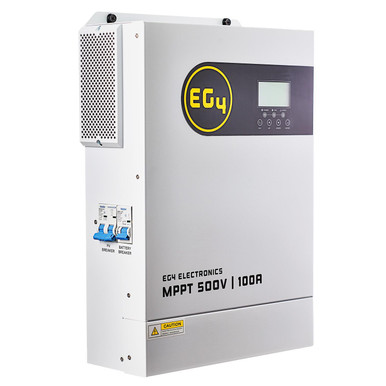I know this is an older thread but I just came across it and thought I would posting as I need to upgrade our combiner box and am hoping for your insight/suggestions.
Thank you for documenting this thread
@MrM1 and to
@timselectric ,
@JRH ,
@Hedges and everyone for your replies. I learned a lot.
A quick explanation. I am new to solar and off-grid. My husband & I decided to go this route as we built a new house on a farm a significant distance from power. The project started during covid when all solar companies were busy so we bought equipment from an off-grid seller and an electrician did the hookup. We have had a few issues come up so I have been trying to learn what I can on my own so I can better understand how it works. I do not have electrical knowledge other than what I have learned online so please bear with my ignorance.
Breakers in the combiner box worked for a while then started tripping more and more, and last week one melted. I want to get it resolved asap to avoid any more overheating issues but also want to make sure the equipment and setup is correct this time.
Equipment I have:
- 16- 450W panels wired in strings of 2 panels each, then paralleled in the combiner box into two separate groups of 8 panels total. So two sets of 2s4p. Each set is connected to a separate MPPT controller (each group of 8 panels connects to a controller).
- Controller specs are maximum 155 Vdc and 100 amps each
- Solar panel specs - 49.3 Voc/V and 11.60 Isc/A each panel
- 48V batteries/system
- Temperatures here can range from -30 C in winter to + 40 C in summer
I understand when you combine 3 or more strings, each string must have its own fuse or circuit breaker and then the combined output will also need a larger circuit breaker (currently our system has each set of panels going into one larger breaker, so 2 larger breakers and that's it). I have seen that fuse size is based on Isc x 1.25 for individual string fusing then *1.25 again for continuous current. In my case 11.60 Isc x 1.25 x 1.25 = 18.125 amps. Rounded up to 20A (which matches the panel "fuse series rating" of 20A specified in the specs).
My questions are:
1. The larger circuit breaker / disconnect for each set of panels would then need to be rated for 80 amps? (20A * 4 series connected). That poses an issue for me because the wire size used by our electrician is #6 which I understand is too small for 80 amps? We can't rewire the panels to have 3 panels per string instead of 2 because that would put the voltage at the maximum our controllers can handle or over in cold temps. So it seems we either have to increase the wire size for 80 amps (difficult to do as they are buried underground for 100 feet from combiner to controllers) or get larger controllers? OR is that not necessary? On the 63A breaker we have now it says trip amps of 81.9. So would the 63A breaker still be sufficient? I also saw someone say that MidNite's circuit breakers that are rated for 100% continuous full load with no damage so does the panel Isc need to be multiplied by 1.25 twice or just once (in which case each big breaker would be 11.60 * 1.25 * 4 series panels = 58 amps (rounded to 60 amp breaker) ?
That would solve the wiring size issue. But I want to make sure the breakers won't keep tripping like they have been. Today the amps on one controller showed 71 amps for a couple seconds (in full sun is was consistently between 60-69 amps). Our breakers were originally 50 amps (trip amp 65), which makes sense now why they were tripping. The electrician replaced them with 63 amp breakers but one melted a few weeks after the switchover (not sure if it was a loose connection or still too small of Amps for the input, or if it's because the combiner box is rated for 120 A max - did not see that until after).
2. If it's an option to keep a smaller breaker like 63A, do we then have to use smaller breakers/fuses for each series? Can we use Midnite's 15A breakers rated for 100% continuous output rather than 20A fuses?
3. Is it better to use fuses or breakers for each string, or does it matter? I feel like if use breakers then if one tripped it would be easier to see where the issue is (rather than opening each fuse box to find the right one) and the breaker can be flipped back on rather than replacing a fuse. But I see more about fuses so just wondering if there is a benefit of using one over the other?
4. I was going to purchase the same combiner box as you did
@MrM1 until I saw the issues you were having (and realized we need 20A fuses and they only have 15A). I cannot find any other combiners that do 8 in / 2 out or two 4 in / 1 out other than to use Midnite Solar MNPV12 or use two Midnite 6 combiners. If I do two Midnite 6 combiners, can I put the 4 series fuse/breakers in the box along with the larger circuit breaker?
5. I saw someone said to use non-polarized breakers. I believe the ones we had were polarized. Are either of these correct?
OR this one
(that one offers single pole or double pole - which is best?)
Thank you!

 signaturesolar.com
signaturesolar.com


